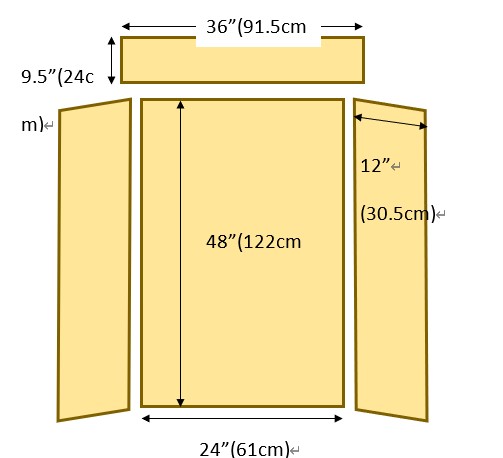Display and Safety Regulations
I. PURPOSE
The "Display and Safety Regulations" serves as operational guidelines for the Taiwan International Science Fair.
II. ORGANIZING COMMITTEE
A "Scientific Review Committee" (SRC) is appointed, members will be selected from professors or associate professors in the field of physics, chemistry, biology and applied science. A chairman will be elected and SRC must review and approve each project before exhibition. The National Taiwan Science Education Center, with the assistance of SRC members, will be responsible for handling relevant display and safety consultation (before and after experimentation).
III. GUIDELINES
If living organism is involved in the experiment, all scientific studies must be conducted to treat the living organism with ethics. Any hazardous substance is prohibited from display and exhibitors must protect the health and safety of the public and the environment.
IV. DISPLAY SAFETY REVIEW
(I) All exhibits must be examined pursuant to "Display and Safety Regulations". SRC members will make the remark "To Be Corrected" or "Rejected" on any exhibit failing to comply with Display and Safety Regulations.
(II) Exhibits "Rejected" for entering the fair
1. Harmful microbes or dangerous living organisms.
2. Poisons, explosives, radioactive or carcinogenic substances.
3. High power laser over Class 2 or against the restriction of IEC 60825.
4. Exhibits or display objects that do not comply with rules and regulations of the fair.
V. ITEMS PROHIBITED FROM DISPLAY
(I) For research on living organisms, prior permissions from the school biology teacher or research scientists are required.
(II) The following items are not allowed at Project or in Booth
1. Living organisms, including plants
2. Soil, sand, rock, and/or waste samples, even if permanently encased in a slab of acrylic
3. Taxidermy specimens or parts
4. Preserved vertebrate or invertebrate animals
5. Human or animal food as part of the exhibitor demonstration of the project
6. Human/animal parts or body fluids (for example, blood, urine)
7. Plant materials (living, dead, or preserved) that are in their raw, unprocessed, or non-manufactured state (Exception: manufactured construction materials used in building the project or display)
8. All chemicals including water (Projects may not use water in any form in a demonstration.)
9. All hazardous substances or devices (for example, poisons, drugs, firearms, weapons, ammunition, reloading devices, and lasers)
10. Dry ice or other sublimating solids
11. Sharp items (for example, syringes, needles, pipettes, knives)
12. Flames or highly flammable materials
13. Batteries with open-top cells
14. Glass or glass objects unless deemed by the Display and Safety Committee to be an integral and necessary part of the project (for example, glass that is an integral part of a commercial product such as a computer screen)
15. Any apparatus deemed unsafe by the Scientific Review Committee, the Display and Safety Committee, or Society for Science & the Public (for example, large vacuum tubes or dangerous ray-generating devices, empty tanks that previously contained combustible liquids or gases, pressurizes tanks, etc.)
(III) Active Internet or e-mail connections cannot be displayed as part of displaying or operating the project during the judging of TISF.
VI. ITEMS RESTRICTED FROM DISPLAY
(I) tems allowed at Project or in Booth but with restrictions indicated:
1. Soil, sand, rock, and/or waste samples if permanently encased in a slab of acrylic.
2. Photographs and/or visual depictions if:
(1) They are not deemed offensive or inappropriate by the Scientific Review Committee. This includes, but is not limited to, visually offensive photographs or visual depictions of invertebrate or vertebrate animals, including humans.
(2) They have credit lines of origin (“Photograph taken by...” or “Image taken from...”).
(3) They are from the Internet, magazines, newspapers, journals, etc., and credit lines are attached. (If all photographs/images are from the same source, one credit prominently and vertically displayed is sufficient.)
3. Any apparatus with unshielded belts, pulleys, chains, or moving parts with tension or pinch points if for display only and not operated; machinery equipment can only be operated in compliance with the following regulations:
(1) Machinery equipment should only be operated by exhibitor.
(2) Power supply must be turned "OFF" when it is not in use.
(3) Adequate measures should be taken to protect visitors.
(4) “Warning Labels" are required.
4. Operation of Class 1 or Class 2 laser (below 1mW) must comply with the safety regulation of IEC 60825.
(II) Any research relating to genetic engineering must comply with the regulations in the "Genetic Engineering Handbook", published by the National Science Council, Executive Yuan.
VII. REMARKS
The "Display and Safety Regulations" was officially approved by the Ministry of Education, Republic of China.

1: The display panel is provided by NTSEC.
2: The weight of display object on the desk is limited in 20 kilometers and shall not exceed the desktop.